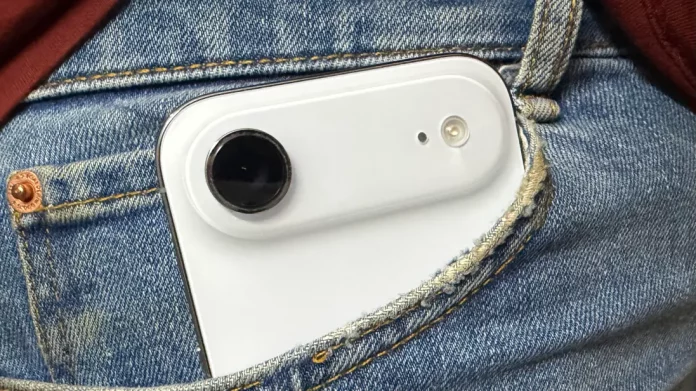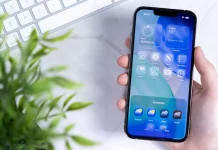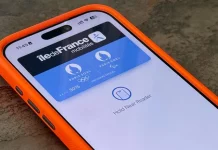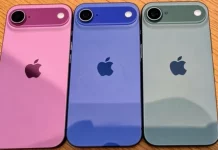After using the iPhone Air for the past 10 days, I can finally answer the question on everyone’s mind: yes, it’s really that light and thin. But the bigger question is whether Apple’s slimmest phone ever — measuring just 5.64 millimeters — is worth the trade-offs that come with that design.
I’ve used the iPhone 15 Pro Max as my daily driver for over 18 months, and I regularly switch between flagship Android phones. So I’m used to phones that feel substantial. The iPhone Air changes that perspective. After a week with it, picking up the iPhone 17 Pro Max suddenly made that phone feel heavy. That contrast alone shows what Apple has achieved here — and what you might give up for it.
Friends who’ve held the iPhone Air instantly comment on how exquisite it looks and feels — even though it weighs only 12 grams less than the iPhone 17. I agree. I often catch myself just picking it up from my desk because it’s so satisfying to hold. The novelty may wear off over time, but for now, the feel of this phone is part of its charm.
Design and Build
The iPhone Air isn’t small — its 6.5-inch display keeps it in large-phone territory — but its thin profile makes it easier to handle. (Sorry, iPhone Mini fans.) If you struggle to use large phones one-handed, this won’t change that, but it does feel slimmer and more pocket-friendly. And yes, when it’s in your pocket, it’s easy to forget it’s even there.
Despite the thinness, the phone feels surprisingly sturdy. I’ve dropped it from bedside height and even accidentally sat on it once — no damage or bending. Several durability tests online back up the same impression: it’s tougher than it looks.
I rarely use cases, and that didn’t change here. Adding bulk defeats the point of the Air’s design. Still, if you plan to use Apple’s new shoulder strap, you’ll need a compatible case. The bumper case is a good compromise for those who want protection without heft.
Battery and Performance
Battery life is the biggest talking point around the iPhone Air — and for good reason. The phone gets noticeably warm after long gaming sessions or extended video streaming, especially near the camera area, and I found myself checking battery levels more frequently than usual.
It’s powered by the same processor found in the higher-end models, so performance isn’t an issue. But if you’re a heavy user, the $99 MagSafe battery pack is almost essential. It snaps perfectly onto the back, extends the battery comfortably through a full day, and can even recharge MagSafe AirPods on the go.
For regular, moderate tasks — phone calls, emails, social media, and video streaming over Wi-Fi — battery life is acceptable. On a two-hour flight watching a downloaded Netflix movie, I didn’t see a significant drop. However, long-term users should expect some degradation over time, which could become noticeable after a year or two.
Camera Capabilities
The iPhone Air comes with a single 48-megapixel rear camera (f/1.6, 26mm focal length) — the same as the base iPhone 17. Image quality is solid, with good sharpness and effective sensor-shift stabilization. Photos tend to be a bit brighter than what you see in real life — typical iPhone post-processing.
The lack of a telephoto or ultra-wide lens is more noticeable. The 2x digital crop works decently in good light, but falls short in low-light conditions. As someone who loves taking candid pet photos, I missed the flexibility of longer zoom. Travelers and landscape photographers will likely feel the same about the missing ultra-wide option.
The updated 18-megapixel selfie camera is a plus — it supports multiple formats without rotating the phone and uses Center Stage to automatically adjust framing when multiple faces are detected. You can manually control zoom and framing, and new dual-camera video features let you shoot using front and rear lenses simultaneously.
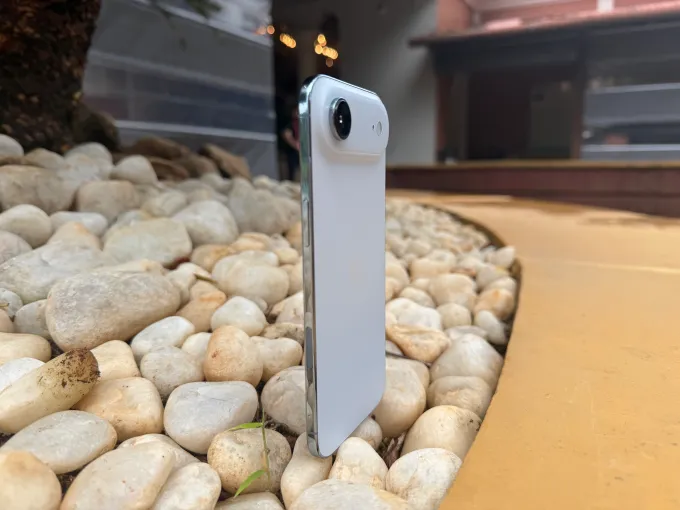
As for the new camera control button, I found it convenient but not essential — old habits die hard.
Audio and Everyday Use
There’s one more compromise: the iPhone Air has a single speaker. With no space at the bottom for a second one, all the sound comes from the top. It’s fine for calls and casual listening, but stereo sound would’ve made a difference. I usually rely on AirPods, but during casual videos, I missed that extra depth.
Verdict
Apple has done the difficult part — engineering a breathtakingly thin, durable phone. The tougher challenge is justifying it. The Air sits where the Mini and Plus once did, aiming to attract users who care more about aesthetics and comfort than raw versatility.
This isn’t a phone you charge once in the morning and forget about until night. It’s a “vibe phone” — one that prioritizes feel over functionality. If you value design, portability, and that feather-light hand feel, the iPhone Air nails it. But if you want all-day battery life, a flexible camera setup, or dual speakers, you’ll find better balance with the rest of Apple’s lineup.


